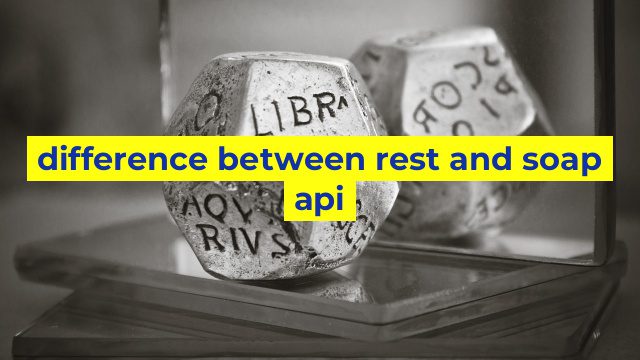The Key Differences Between REST and SOAP API
As application programming interface (API) continues to be a crucial element in the development and deployment of applications, developers must choose an API that best suits the need of their application. Among the most commonly used APIs are Representational State Transfer (REST) and Simple Object Access Protocol (SOAP).
While it is often a personal choice between REST and SOAP, knowing their significant differences will better assist developers in choosing the more appropriate API. Below are the key differences between REST and SOAP API.
1. Architecture
REST is known for its architectural style that uses HTTP requests to post, get, put, and delete data. It’s an architecture that mostly leverages XML/JSON and HTML protocols for data-handling. In contrast, SOAP is more heavyweight and uses XML syntax for data-handling except for the REST-compliant WS-I mappings.
2. Performance and Reliability
When it comes to performance, RESTful APIs are a faster technology due to their lightweight architecture. SOAP has a higher overhead resulting in increased latency, impacting performance. However, because SOAP adds another layer of security and reliability through the use of WS-Security, it has a better reliability measure.
3. Ease of Implementation
The development landscape for REST and SOAP is different. RESTful APIs are known to be a more straightforward design, easy to implement, and require fewer resources than SOAP. As for SOAP, the development process requires more resources, is complex, and not ideal for smaller-size applications.
4. Usage in different platforms
RESTful APIs are widely accepted, making it an excellent choice for clients that don’t have support for SOAP. In contrast, SOAP is better for clients that consume large volumes of data because of its ability to work with other protocols.
5. Caching characteristics
RESTful APIs are useful at leveraging the right HTTP headers for caching content. Because it is a direct format with the integration between the HTTP verb and their associated resources, cache facilitation becomes simpler. However, caching in SOAP can be challenging because of its complexity.
In conclusion, while REST and SOAP APIs have their differences and similarities, the decision will ultimately depend on the application’s specifics. RESTful APIs could be the perfect choice for lightweight applications that require faster response times, while SOAP is ideal for complex applications that require robust security and reliability measures.
Table difference between rest and soap api
| Criteria | REST API | SOAP API |
|---|---|---|
| Architecture | Representational State Transfer (REST) | Simple Object Access Protocol (SOAP) |
| Data Format | XML, JSON, or both | XML only |
| Transport Protocol | HTTP, HTTPS, or both | HTTP, HTTPS, SMTP, or more |
| API Design | Resource-based architecture | Function-based architecture |
| Security | Uses SSL (Secure Socket Layer) for communication | Uses WS-Security (Web Services Security) for communication |
| Performance and Scalability | High performance and scalability due to lightweight architecture | Lower performance and scalability due to heavyweight architecture |
| API Documentation | API documentation is simple and easy to understand | API documentation can be complex and difficult to understand |


